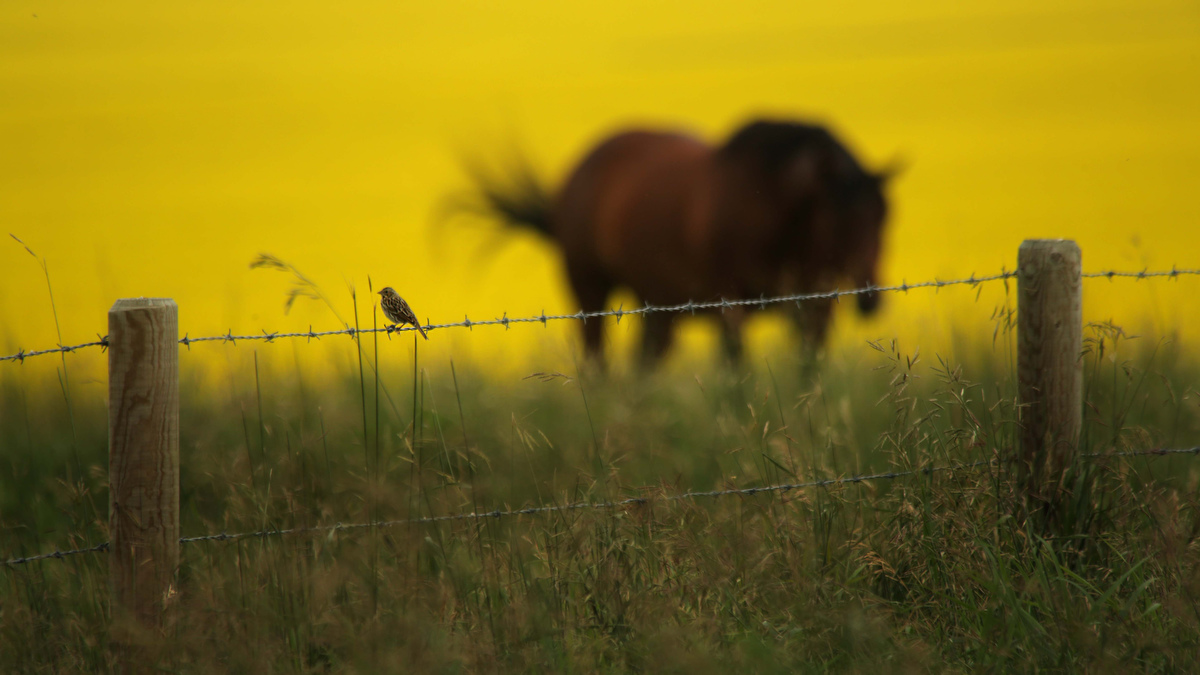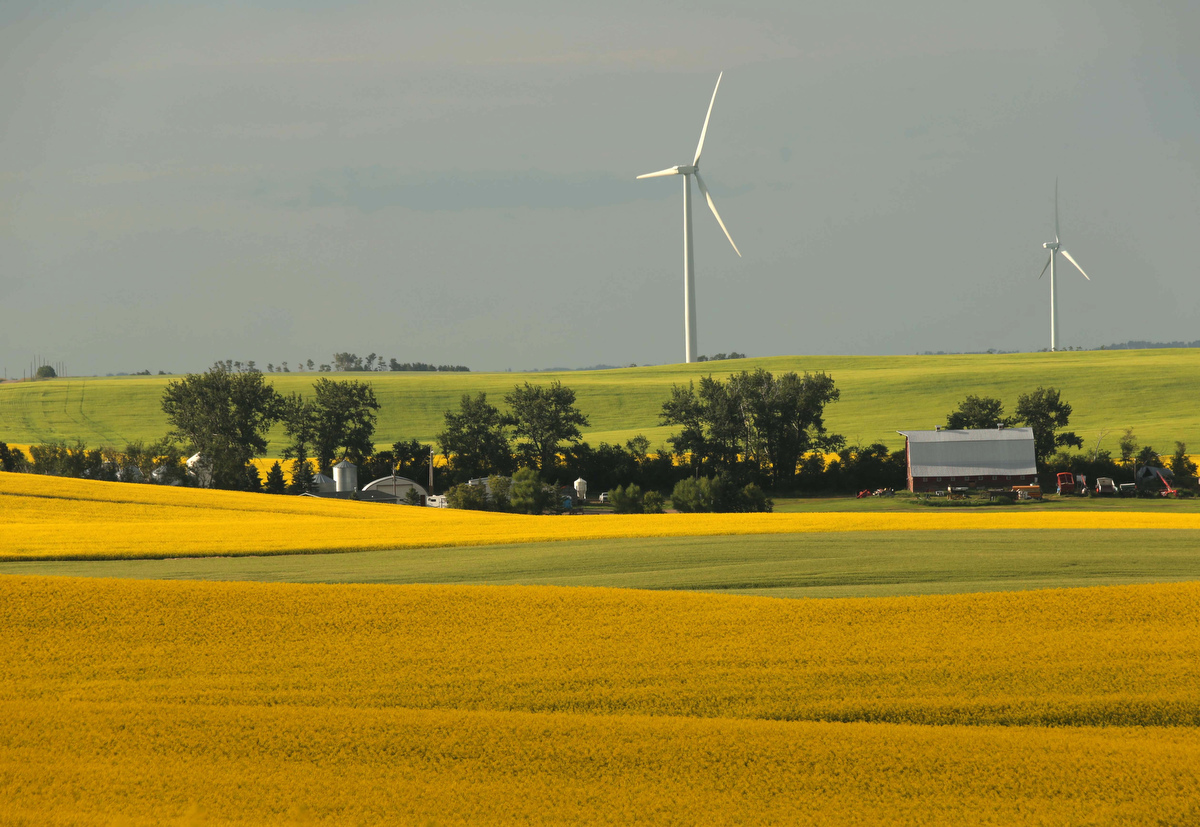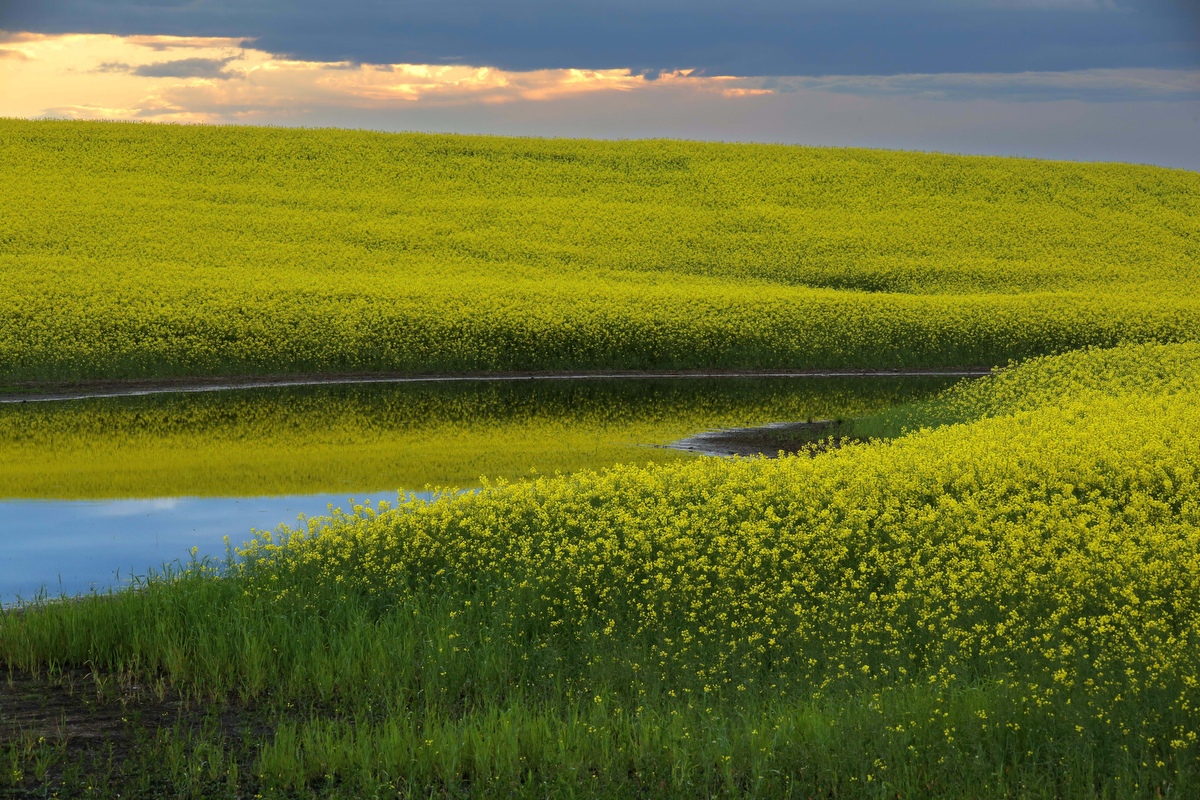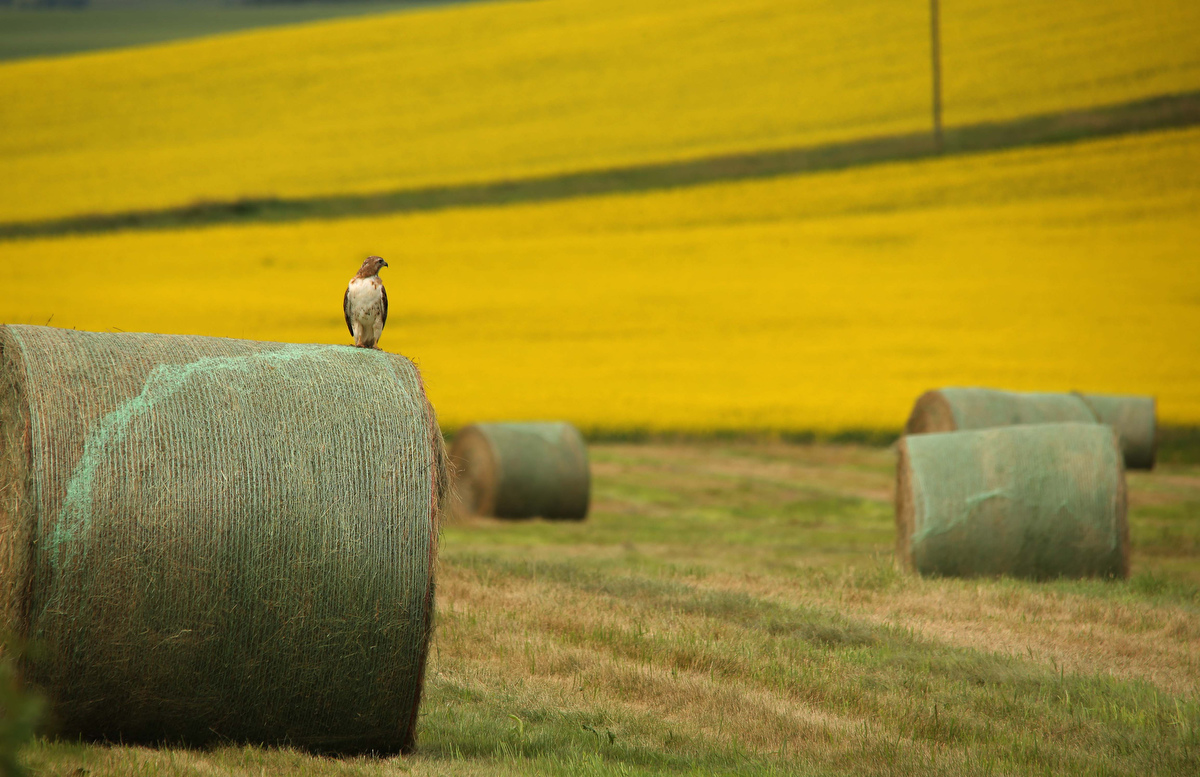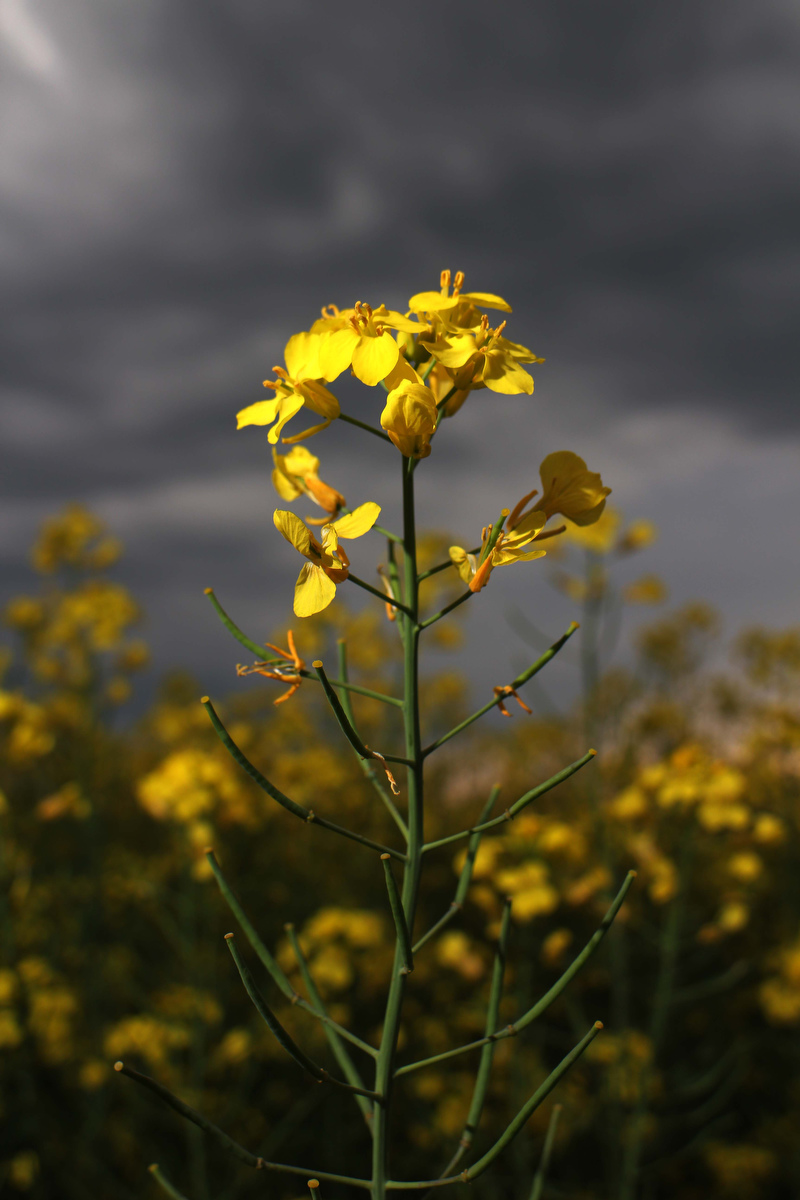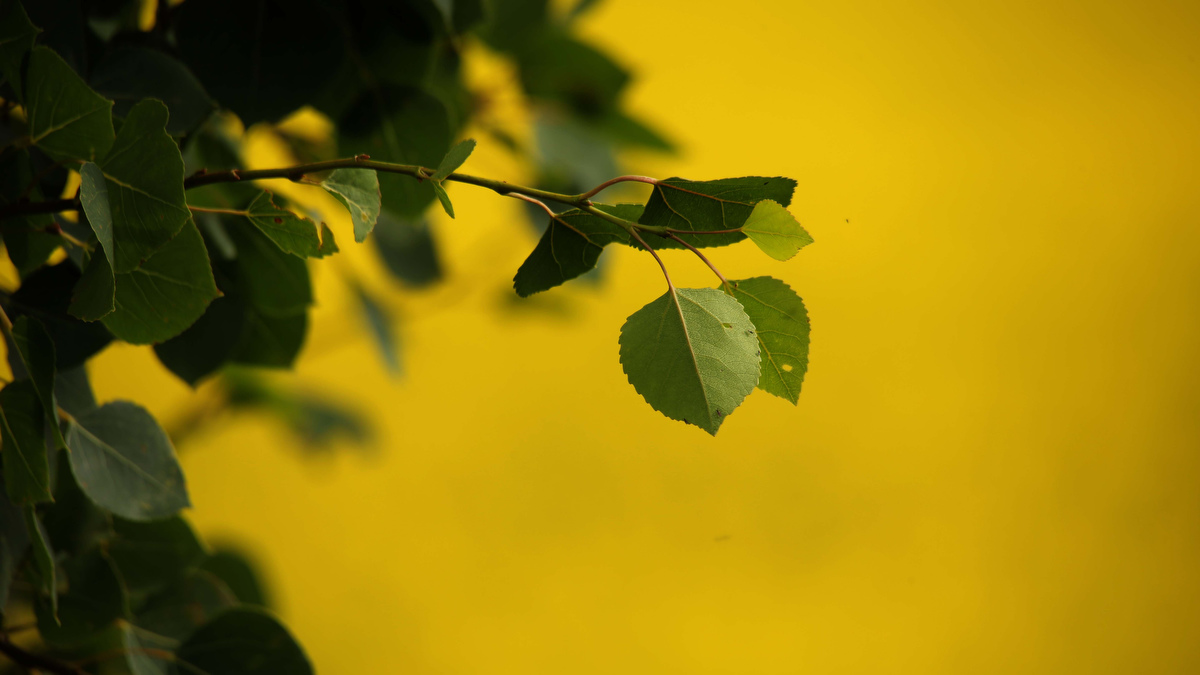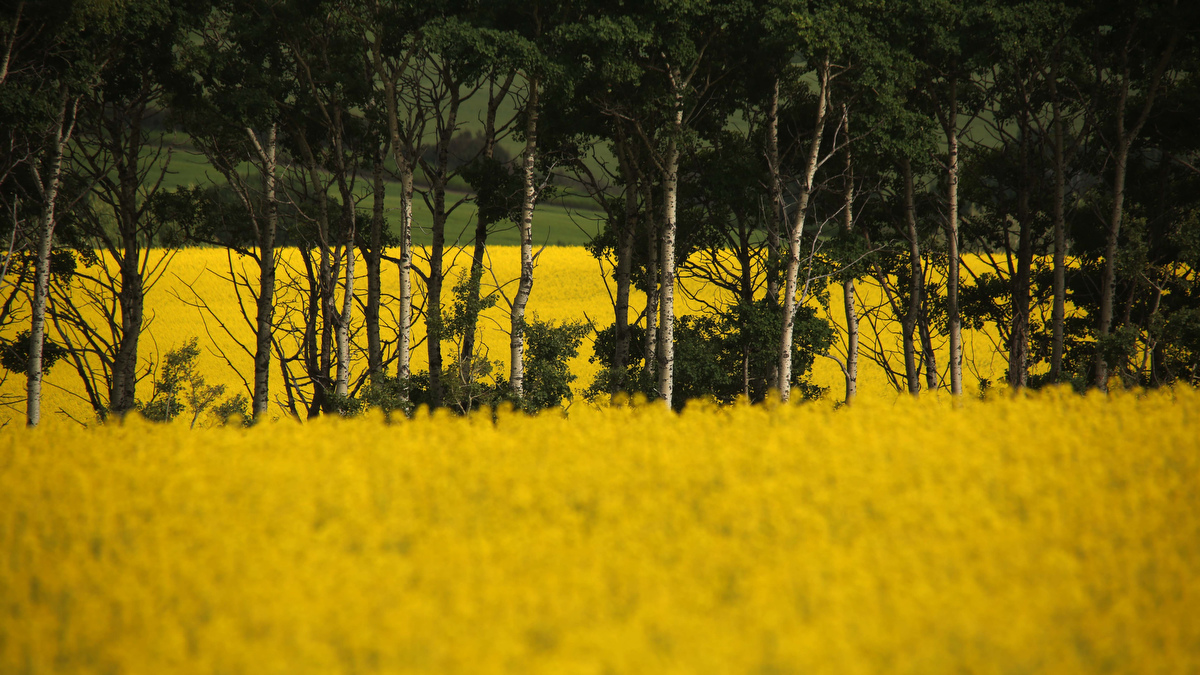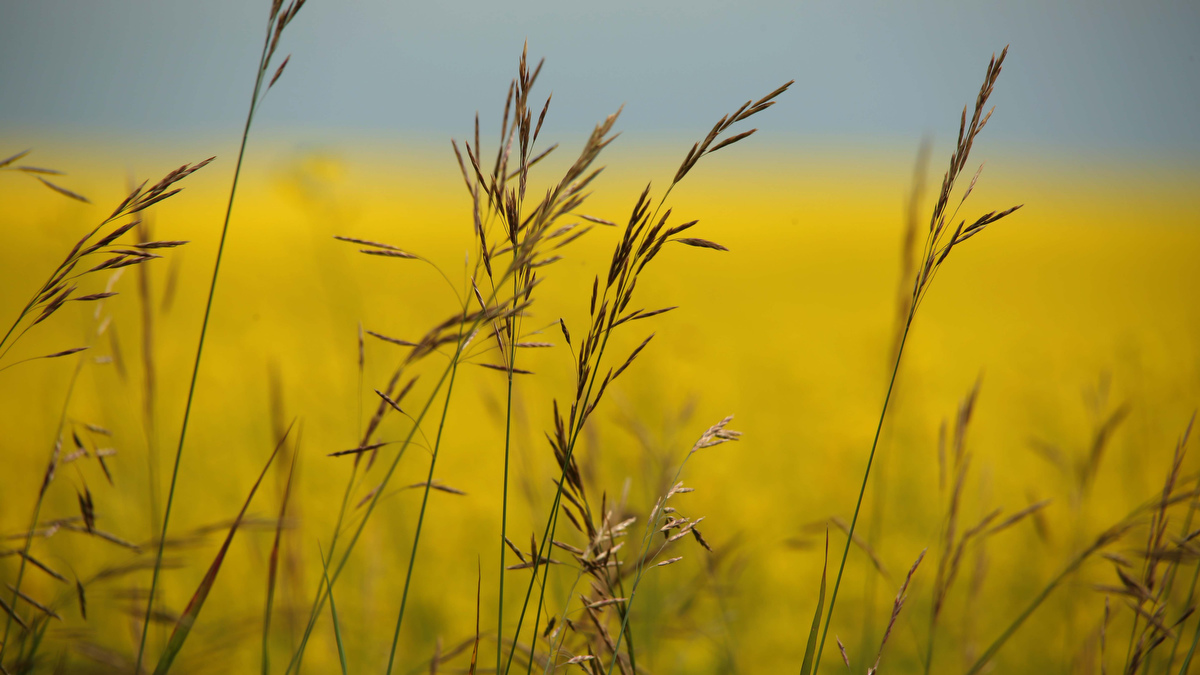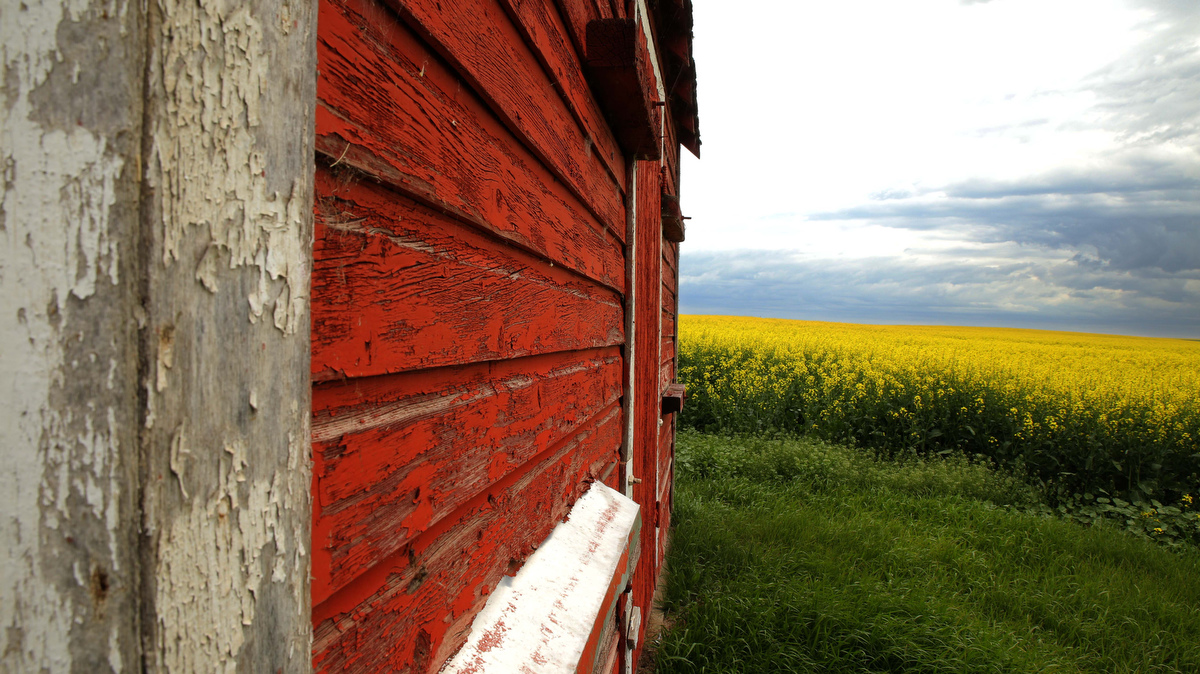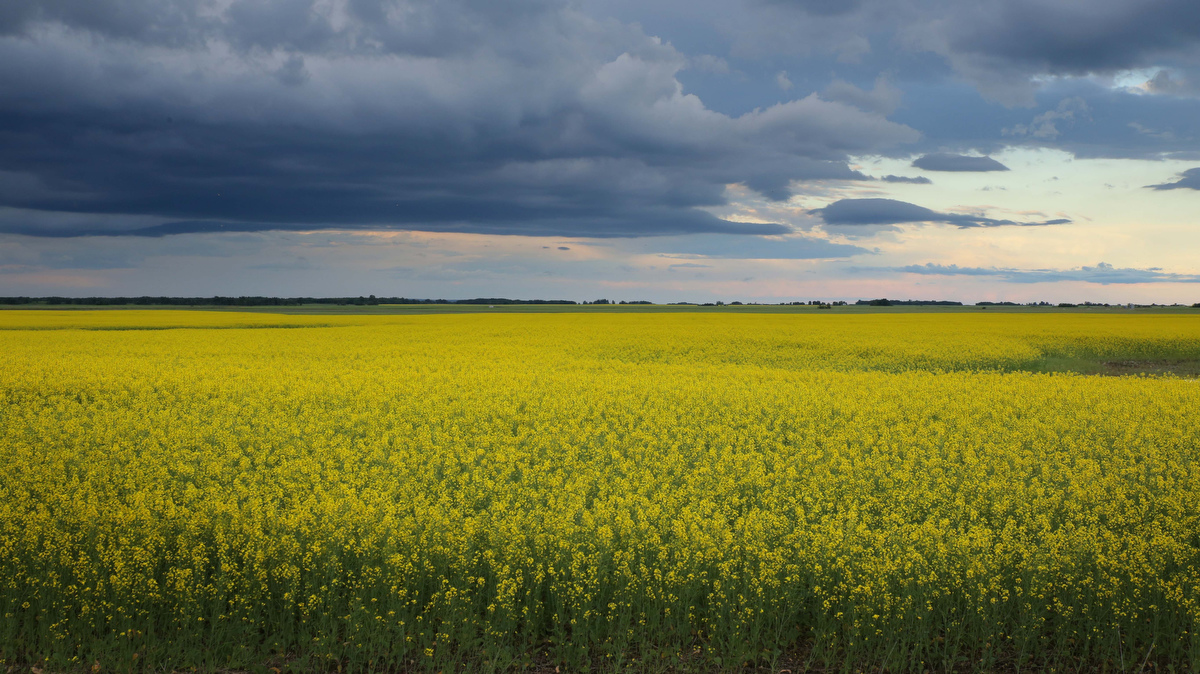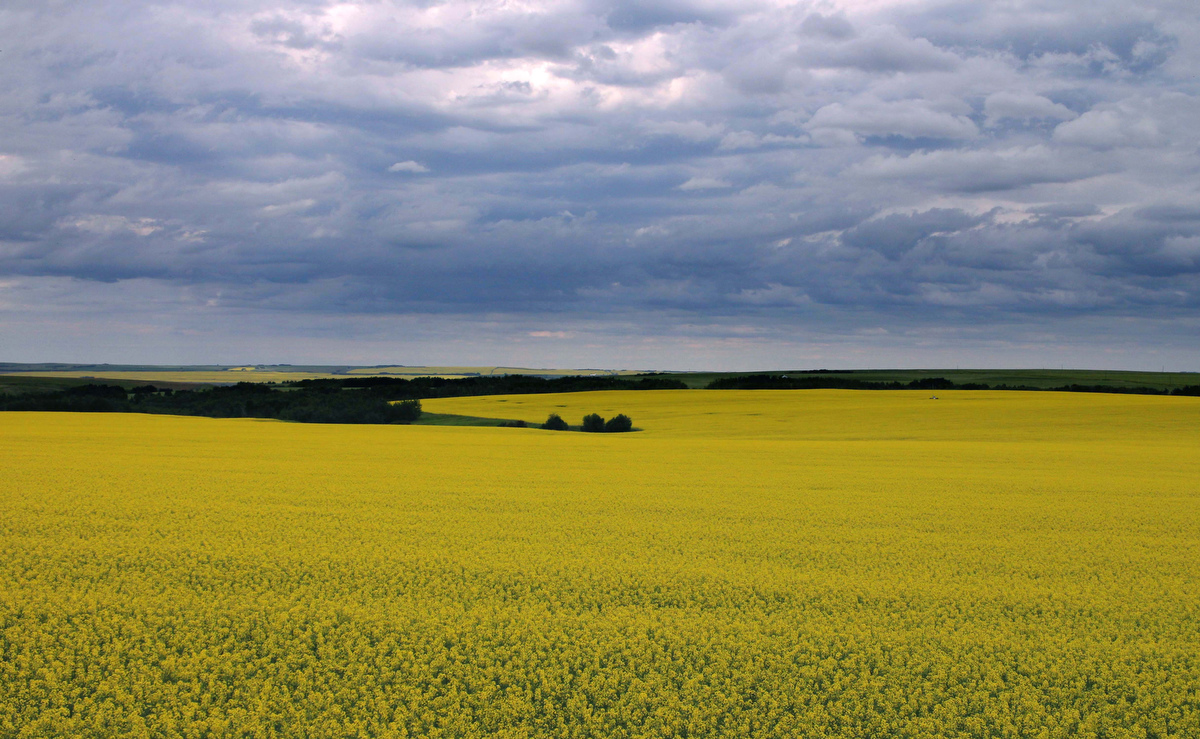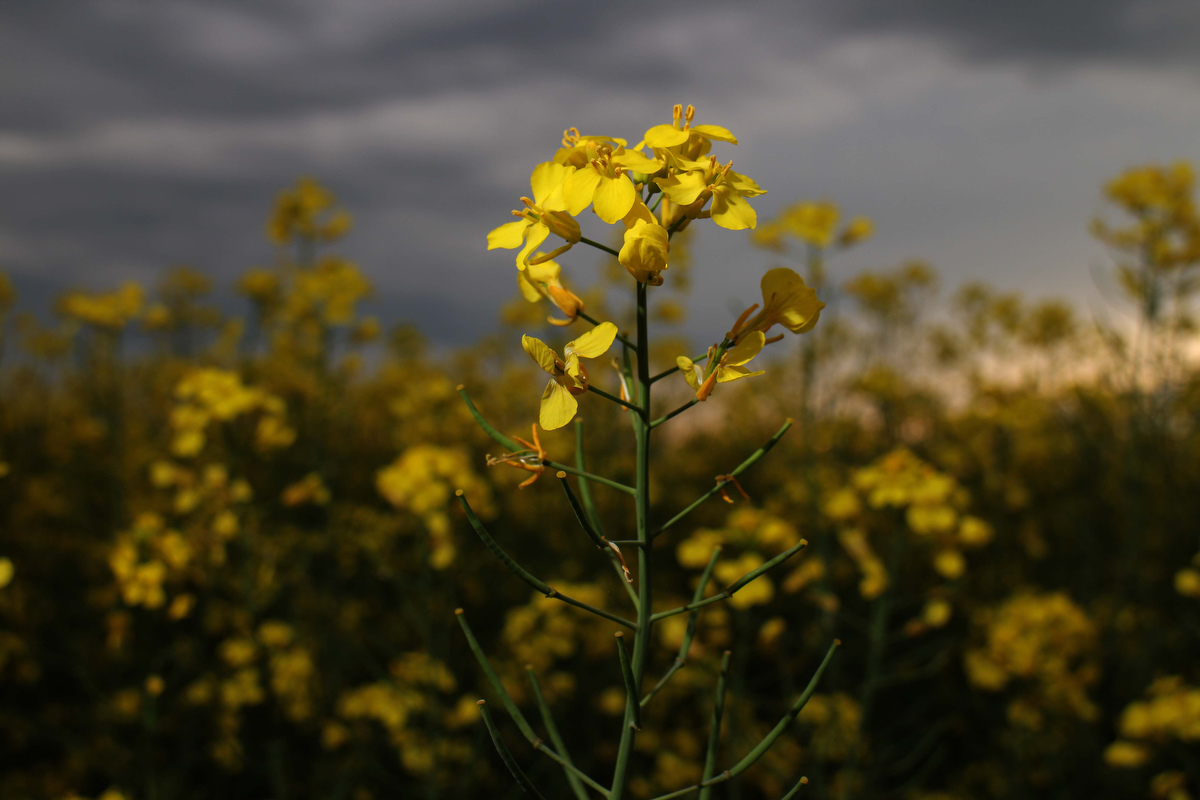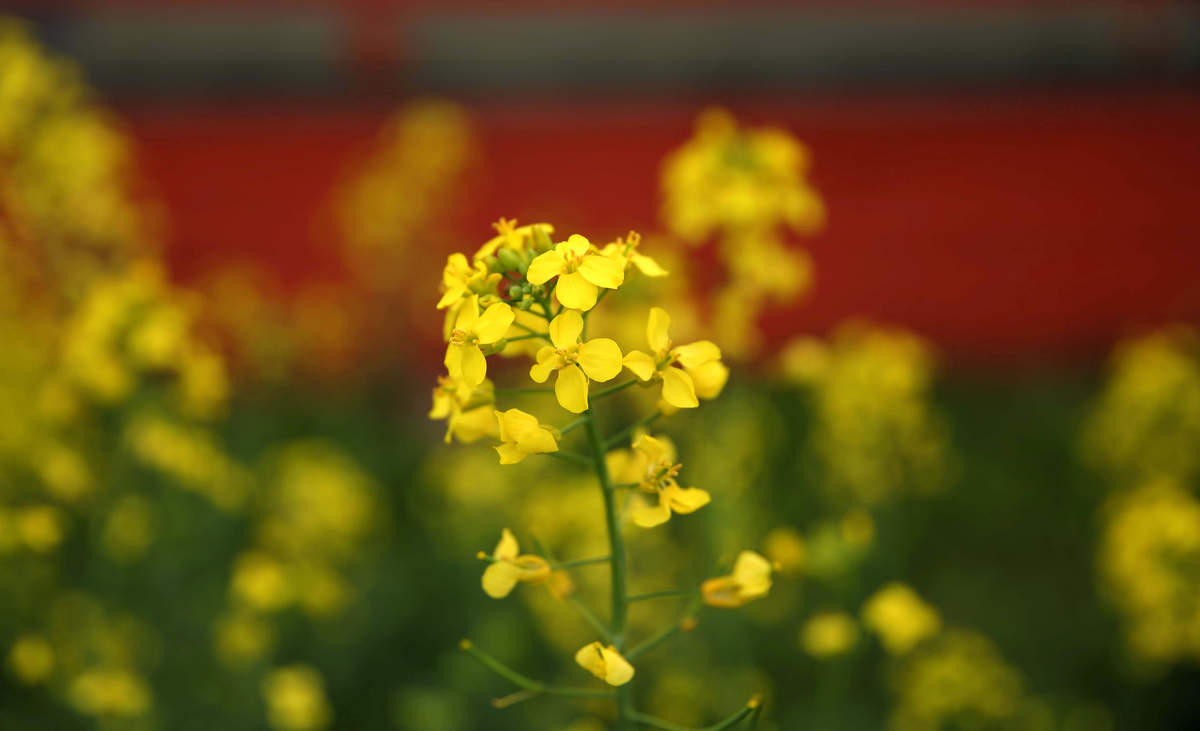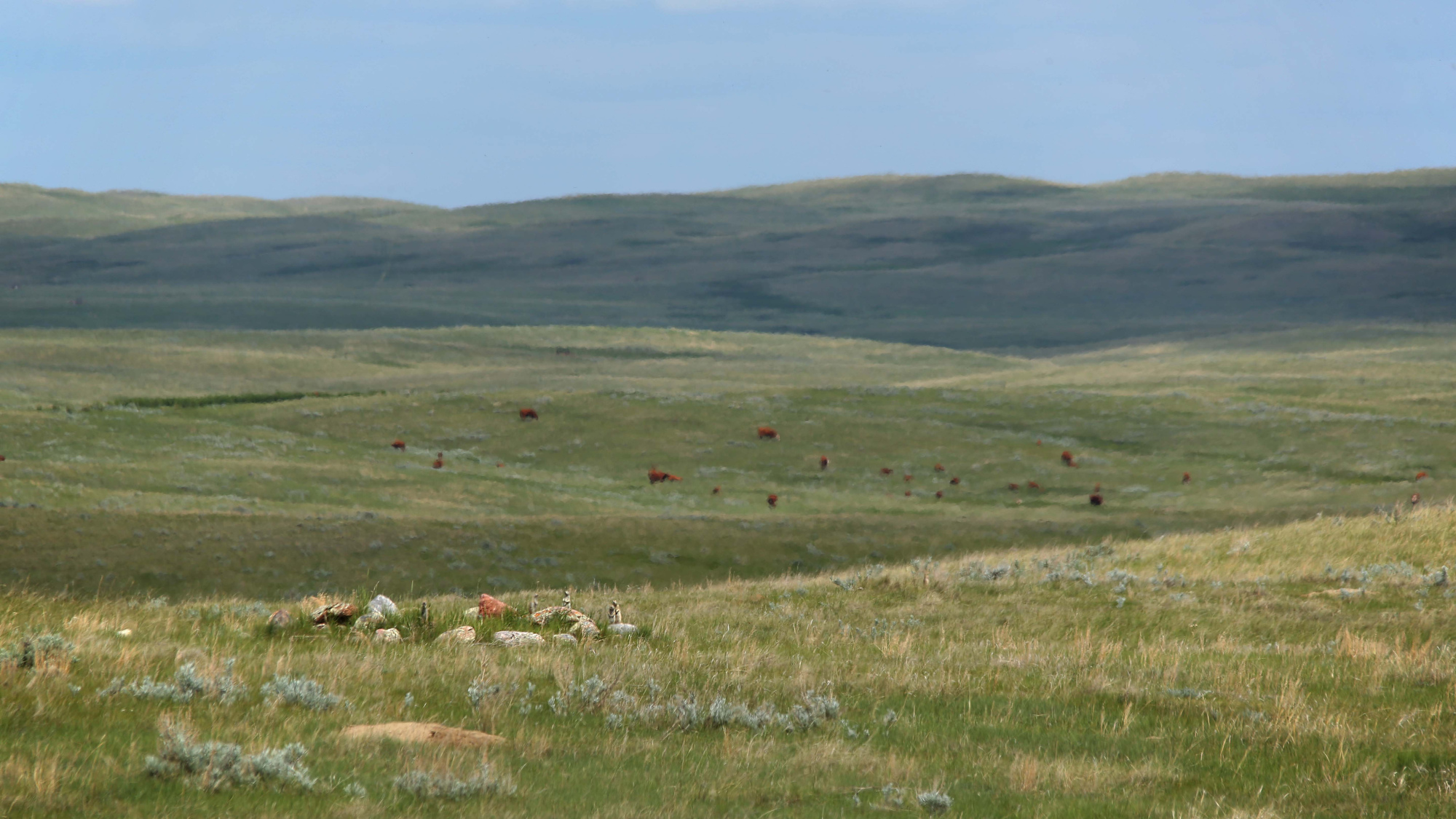The heat around me was jungle-damp and the mosquitos were vicious.
They were buzzing in my eyes and ears, probing their way through my shirt to get at my high-cholesterol blood. Sweat trickled down my back and dripped from my eyebrows onto the back of my camera. The air around me felt thick with moisture and it carried a heavy, sulfury smell.
But then, canola fields are always like that in the middle of July.
I was east of Trochu, somewhere between the town and the canyon of the Red Deer River and I was surrounded by yellow blossoms. From my vantage point the bright yellow flowers stretched off to every horizon. With the cloudy evening sky overhead turning a slate grey, the glow of the canola flowers inverted the usual order of brightness making the ground seem lighter than the sky.
The day itself hadn’t been all that hot - around 27C - but the humidity coming off the chest-high plants that surrounded me seemed to magnify the temperature to tropical proportions. It was a bit hard to breath as I shot my pictures and every swipe of my hand across my face or arms left streaks of blood squashed from the horde or mosquitos around me.
But it was fascinating to be here anyway.
Canola is a more or less Canadian invention. It’s a variation on ancient varieties of rapeseed - the name comes from the Latin word rapum, a turnip - that was developed specifically for its oil production and designed to be grown in the Canadian west.
Canola - like wheat, barley and other crops - grows in a monoculture environment. That means that ideally, there will be no other plants growing in the fields with them, no potential loss of yield from competition for nutrients by other species. Great for profits, not so great for other living things.
Certain genetically-modified versions are resistant to herbicides that kill other plants but even if there were so-called weeds growing among those millions of bright blossoms, you’d likely never be able to see them. Picking out a loose canola plant growing in a wheat field is easy. Finding a stalk of wheat in a canola field is impossible.
Standing there sweating and swatting, I looked at the plants around me. The tallest flower stalks came up to my chest level At my height of 6’1” that would make them a bit over five feet tall. But the height of the plants was less impressive than their sheer numbers. They were so thickly packed together along the edge of the field that very little light penetrated to the ground below. The dirt among the stalks was barren, not another bit of green visible.
Getting down on my knees to poke around, I moved a few of the stalks aside to see how far I could look along the ground and as they brushed together they squeaked like balloons or chunks of styrofoam. And they smelled.
The flowers themselves actually smell kind of pleasant, a bit like alfalfa, but the green stems, leaves and seed pods give off a heavy sulfur smell. Up close, it’s powerful. The scent comes from the chemicals in the body of the plant so when I did a search to try to find out where the smell comes from, I discovered - courtesy of Wikipedia which is never wrong - that canola and its rapeseed cousins are members of the same family as mustard and cabbage as well as turnips.
All of which are known for their sulfury smell. Especially cabbage. Yummy, yummy cabbage.
I could stand the heat and humidity at the edge of the field but those skeeters were really starting to annoy me so I packed up and moved on.
The rolling hills and valleys out here around Three Hills, Trochu, Huxley, Elnora, Torrington and other towns are lovely any time of year and I come out this way often. But I don’t think they ever look better than when they are covered with canola blossoms. I found a red granary to put in the background for a few pictures and lined up a horse and a sparrow with an all-yellow background. There was a pair of fields south of Elnora that contrasted yellow and green with canola on one side and field peas on the other.
West of there where the world heads off to the mountains on the far horizon I found wind generators cranking out electricity above the yellow fields and I used my flash to make the flowers stand out against an oncoming thunderstorm.
As the sun dropped behind the last bank of clouds on the western horizon I came across a field with a mirror-like slough in it. A bit of rain had fallen a little while before and now in the cooling evening there was a bit of mist coming off the field. The blue light of dusk made the yellow of the canola look even more intense.
I watched a couple of willets probing in the mud along the slough’s shore for bugs and snails as the evening darkened. A motorcycle passed as I sat there and I could hear it rumbling far down the road, the sound carrying on the still air.
The scent of sulfur rolled in from the field, the buzz of mosquitos finally drowned out the sound of the bike. And the glow of canola lit up the blue of the darkening day.
Monocultures are not nature’s way. But if we’ve got to have them, they don’t get much more beautiful than this.
